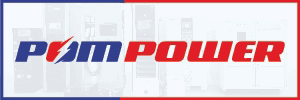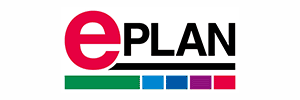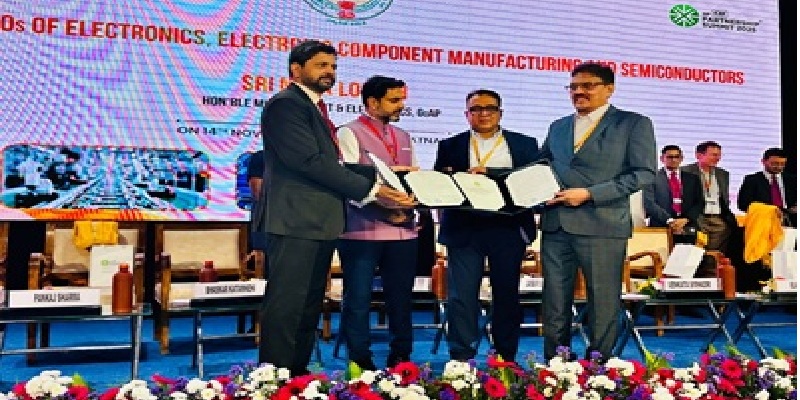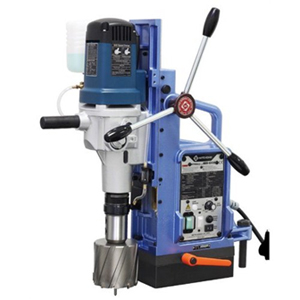Schedule a Call Back
PLI schemes have had a major impact on several Indian sectors: Abhishek Malik
 Interviews
Interviews- May 13,25

Please walk us through the
evolution of your business?
As one of the leading innovators in the lighting and electronics
sector for 48 years, Calcom Vision has made a name for itself in Original
Design Manufacturing (ODM) and Electronics Manufacturing Services (EMS). In the
1970s, we were making computers and were way ahead of the time. We actually
made a personal computer and surprisingly, it was the same time when Steve Jobs
was working on the first Macintosh in India. We then shifted into making
scientific calculators. And then again we shifted to manufacturing Televisions and
audio systems. From B/W and colour televisions, solar items, LED lighting, home
appliances, scientific programmable calculators, and now EV chargers, it has
been a very thrilling journey for us.
Now, with the evolution of global trends and market, we also have
shifted to ODM and EMS provider. In ODM, we take the lead in creating unique
solutions that are tailored to the demands of our customers. We provide goods
including BLDC fans, solar-powered systems, and IoT-enabled smart lighting from
conception to prototyping, all of which are designed to meet market
expectations and the most recent technological developments.
Additionally, in case of EMS, we have a 15000sq.m facility, fully
equipped with advanced tools, automated processes and with in-house backward
integration such as plastic extrusion, Plastic moulding, an in-house Tool room,
Powder Coating Plant and Pressure Die Casting Plant, where we work on
large-scale productions. This enables us to deliver efficient, cost-effective
manufacturing without compromising on quality. Our ability to quickly adjust to
shifting client demands ensures flexibility while upholding the highest
production and delivery standards.
Our development is proof of our flexibility, extensive technical
expertise, and dedication to excellence—qualities that have enabled us to
establish ourselves as a reliable partner for some of the most prestigious
brands.
Could you shed light on
your current facilities, and tech adopted to stay ahead?
Our
advanced manufacturing strength is driven by Calcom's cutting-edge 15,000
square meter plant in Greater Noida. We monitor the entire production lifecycle
under one roof, from design and development to assembly and packing promising
unmatched precision, quality, and efficiency at every stage. Our completely
integrated setup enables us to provide end-to-end solutions across a broad
range of products, supported by in-house plastic molding, plastic extrusion,
powder coating, pressure die casting, and a state-of-the-art tool room.
We
provide a variety of indoor and outdoor products like BLDC Fans, LED Lightings,
Solar lighting systems, Electronic drivers and EV Chargers. LED bulbs, battens,
panels, ceiling lights, and inverter bulbs belongs to our interior product
line. We provide solar-powered options, high bay lights, floodlights, well
glass lights, and high-performance streetlights for outdoor settings. We provide
innovation, efficiency, and dependability at scale by being leaders in
energy-efficient BLDC fans, cutting-edge LED drivers, and intelligent IoT
lighting systems.
How do you view the current trends in
India’s electronics manufacturing sector?
Indian
Electronics Manufacturing sector has seen a major transition in the past few
years, especially on energy sufficient and sustainable lighting. At Calcom
Vision, we have shifted towards IoT and R&D technologies keeping in mind
the current trends going on in the industry.
IoT
is a game changer that is transforming how people use their homes and
workplaces. At Calcom, we use cutting-edge R&D capabilities to develop
smart lighting solutions that provide energy-efficient and automated smart
lighting solutions. By connecting with smart home ecosystems, our products—like
connected indoor and outdoor LED systems—offer customized lighting experiences
while maximizing energy efficiency. We are right now focusing on user centric
designs and advanced IoT innovations, to connect innovation, sustainability,
and convenience.
Our
wide range of products includes IoT-powered indoor and outdoor LED lighting,
smart home lighting systems, and space transformation through affordable,
eco-friendly, and intelligent lighting options. By implementing automation and
integration, we are changing the future of contemporary homes and businesses,
expanding our capabilities, and setting new industry standards.
How has Calcom positioned itself in the
evolving Indian electronics landscape?
We
have adopted double strategy for expanding its manufacturing
capabilities and diversifying its product portfolio, so fully aligning itself
with the ‘Make in India’ and ‘Atmanirbhar Bharat’ objectives. Our fully
integrated Greater Noida facility is being expanded from 15,000 to 30,000
square meters, doubling our capacity to meet growing domestic and international
demand. Quality control, cost effectiveness, and independence are improved by
our investments in automation, backward integration, and infrastructure, such
as the establishment of internal powder coating and aluminum pressure die
casting facilities. These initiatives not only support import substitution but
also position Calcom as a resilient and scalable manufacturing partner.
Additionally, we are expanding our business globally as well. Our
collaboration with Korea’s Taewha Enterprise has resulted in production of
100,000 Brushless DC (BLDC) fans annually delivering 50–60% more energy
efficiency than conventional fans. By investing in automation and backward
integration, we enhance productivity and cost-efficiency. This
collaboration accelerates localization, cuts down import dependency, and reinforces
our commitment to sustainability and national initiatives like Make in India
and Atmanirbhar Bharat. It positions Calcom Vision to expand its market
presence, diversify its product portfolio, and actively contribute to India’s
energy efficiency goals through innovation-led manufacturing.
What are the key
challenges and how do you think the industry can overcome them?
?India's electronics manufacturing sector is undergoing a
transformative phase, driven by robust government initiatives like the
Production Linked Incentive (PLI) scheme and the ‘Make in India’ campaign.
These efforts have attracted significant investments, aiming to reduce
dependency on imports, especially from China, and to bolster domestic
production capabilities. However, challenges such as infrastructural
bottlenecks, regulatory complexities, and a shortage of skilled labor continue
to impede rapid progress. To overcome these hurdles, a concerted effort
involving policy reforms, infrastructure development, and workforce upskilling
is essential. By addressing these areas, India can solidify its position as a
global electronics manufacturing hub, fostering innovation and economic growth.?
What tangible impact have
you seen of PLI on the over-all Indian electronics industry?
PLI
schemes have had a major impact on a number of Indian sectors. By encouraging
domestic manufacturing, these programs have raised output, created jobs, and
increased exports. Additionally, they have drawn large investments from both
domestic and international firms. Notably, the recent enhancement of the PLI
threshold from Rs 100 million to Rs 250 million reflects the government’s
commitment to doubling down on manufacturing incentives and enabling greater
industry participation. We have observed the positive impact of the PLI Scheme,
which has transformed the manufacturing industry in India. In addition to increasing
investment and production, it has helped the sector scale its operations and
improve its self-reliance. The program aligns with the Atmanirbhar Bharat
vision and, combined, they are assisting in establishing India as a competitive
global manufacturing powerhouse, fostering innovation, reinforcing supply
chains, and facilitating sustainable growth.
What are
your plans for Calcom in the next 3-5 years?
In the next few years, Calcom Vision is set to take the
lead in smart and energy-efficient solutions for homes and infrastructure, both
in India and across global markets. Through innovations, a strong dedication to
sustainability, and strategic partnerships, we are advancing this ambition.
Accordingly, residential solutions account for about 80% of our sales, with
professional and commercial applications accounting for the remaining portion.
This diversification reflects our dominance in the home solutions space.
We're rapidly expanding our IoT-enabled product
portfolio, entering high-growth segments like EV infrastructure, and
accelerating our global export strategy. Our partnership with Taewha marks just
the beginning—we’re actively pursuing global alliances to tap into next-gen
technologies and push the boundaries of what's possible.
With a relentless focus on R&D, strong ESG
alignment, and full support for the Make in India mission, Calcom Vision is
ready to power India’s shift toward intelligent, efficient, and sustainable
living at scale and with impact.
What is your
outlook on India’s position in the global
electronics manufacturing space over the next decade?
India is poised to become a global leader in electronics manufacturing
over the next decade, driven by a combination of robust policy initiatives,
strategic investments, and a burgeoning domestic market. The Production Linked
Incentive (PLI) scheme, with an allocation of Rs 229.19 billion, has been
instrumental in attracting significant investments and scaling up production
capacities. As a result, India's electronics production is projected to reach $300
billion by 2026, positioning the country as a key player in the global supply
chain. Furthermore, the government's ambitious target of achieving $500 billion
in electronics manufacturing by 2030 underscores its commitment to fostering
innovation, enhancing value addition, and creating employment opportunities.
With a focus on reducing import dependency, bolstering component manufacturing,
and leveraging its skilled workforce, India is well on its way to establishing
a competitive and sustainable electronics manufacturing ecosystem that can
cater to both domestic and international markets.?
Related Stories

Electronics Sector Targets USD 500 Bn Output by 2030
India’s electronics industry expects strong growth driven by FTAs and incentives.
Read more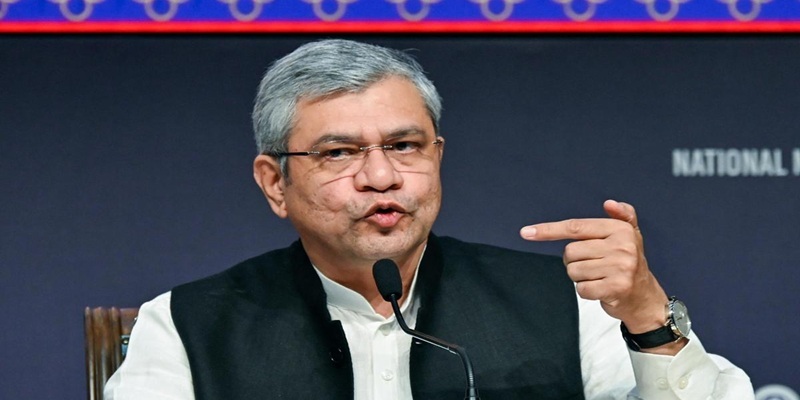
Government Clears 17 Electronics Projects Worth Rs 71.72 Bn
Seventeen electronics component projects have recently been approved in India.
Read more
Texmaco Wins Rs 150.6 Mn Contract for Ballastless Track Systems in Delhi Metro
The ballastless track system is a key component of modern metro infrastructure globally, offering enhanced stability, reduced maintenance, and superior performance under high-frequency operations.
Read moreRelated Products

Integrated Electric Gripper S Series
IBK Engineers Pvt Ltd offers a wide range of integrated electric gripper S series.

Geared Electric Motors
Delco Fans Pvt Ltd offers single phase capacitor run and three
phase geared Instrument motors, totally enclosed face/foot mounted.

“Kusam-Keco” Partial Discharge Acoustic Imager - Model - Km-pdai
‘Kusam-Meco’ has introduced a new “Partial Discharge Acoustic Imager Model KM-PDAI.



